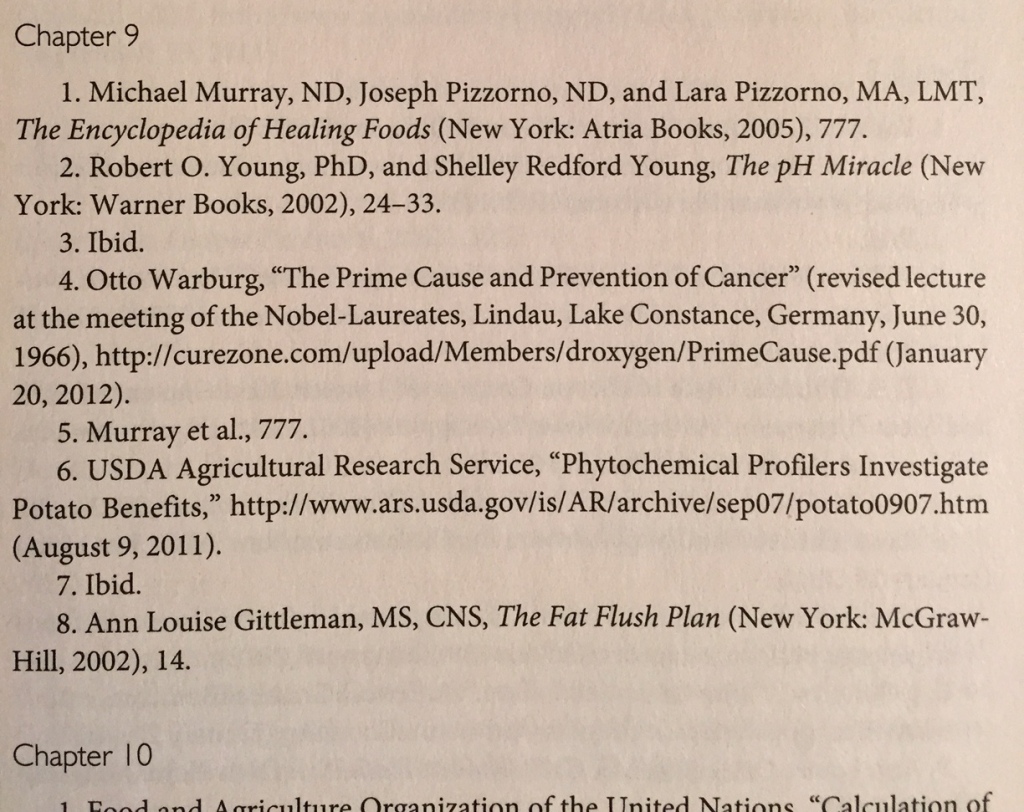Regrettably I am here to share with you another negative review of a weight loss book. I would prefer it was a positive review or that it was at least okay, but it is really bad an I have a strong need to highlight this. I think this need comes from the hope that the author will realize that there are issues with what they have said and eventually change. The odds for this are very low. Additionally, and really my main reason, is to prevent the general public from wasting their time, money, and effort on information that has little or no validity.
The book is The Science of Skinny: Start understanding you body’s chemistry and stop dieting forever (2012) by Dee McCaffrey. To be clear, and to get right to the point, I do NOT recommend this book as it is filled with half-truths and out right nonsense. Here are some of the reasons for my stance.
First, the good news, I like the beginning part of the book title, The Science of Skinny. However, when you open the book, it is basically all down hill from there. What stands out for me is her use of “science” in the title, which I applaud, but clearly she does not stick to the principles of the scientific method, and critical reasoning. With that in mind, I will start with looking at the “science” she uses for chapter 9, Alkalize and Liver-ize: The secrets to a Clean and Balanced body Chemistry.
The authors states at the beginning of the chapter;
“When our pH is balanced, we should lose weight easily. But, if our main fat-burning organ (our liver) is clogged with toxins and fat (which is very common, considering the extensive exposure to sugar and food additives these days), it will not be able to burn fat efficiently, and we may have difficulty losing weight despite a balanced pH” (p.171-172)
Keep in mind that she has an undergraduate degree in chemistry.
Seeing this is the “science” of skinny, does she use any science and quality evidence to support her propositions, NO. The following pic is of the references for this chapter.

The only thing she gets correct in this chapter is the description of what pH stands for and the fact that foods do have different pH effects when digested and metabolized. However, there are many systems that keep our pH (in different body compartments) within a healthy range. Additionally, there is no quality evidence that some pandemic of an unhealthy pH balance has been going on for 40 years and this is the key reason for weight gain and the frequent inability to lose weight and maintain a healthy weight. What is interesting is the fact nutrition scientist have been looking at this concept, pH of the body, for decades and from the research I have read, there is nothing to say that eating a diet that is more or less “acidic” causes weight gain or inhibits weight loss. There have been two symposiums on the topic, 2000 and 2008 and many papers on this topic, and there is something (possible effects on health) to the acid/alkaline aspect of the diet, usually referred to as the Potential Renal Acid Load (PRAL) (Remer and Manz). But, again, when it comes to the ability to lose fat and maintain a healthy weight there really is no quality evidence that the acid/alkaline balance of the diet has any meaningful effect.
The author refers to the “acidic pH”, but this is not literally true, as she is actually referring to a relative acid shift in the blood, but the blood, which normally stays around 7.4 pH, will not go below 7, and therefore is not literally acidic. However, she also states “Although your blood pH is always maintained at 7.4″ (p.184), say what? She states that eating certain foods will cause you to become acidic, but that the blood pH doesn’t really change and stays in a slightly alkaline state. She really is not representing what is actually know about what happens to the pH of the blood, and other tissues, from eating different diets that are more or less “acidic” or “alkaline”.
Let’s move onto a few more gems. Here are her “Laws”;

I think numbers 4, 6 and 7 are the most egregious examples of nonsense.
A few more notable nonsense quotes;
“Being a scientist, and wanting to reach both populations, I needed a more compelling reason for convincing people to eliminate sugar and flour from their lives” (p.47, emphasis added)
“The effect of sugar on your body goes far beyond empty calories and tooth decay – it is, according to several medical experts, a scary toxin” (p.48)
“Fats not only don’t make you fat (unless you eat them to huge excess – and even then, only if you also ingest enough sugars and starches to stimulate your fat-storage system), they’re good weapons against obesity” (p.106)
I could go on with many more examples of out right fallacious and misleading statements she makes throughout the book, but I hope these examples will suffice and make someone considering reading this book, and more importantly, to believe this information, to think twice before doing so.
Reference
Remer & Manz (1995). Potential renal acid load of foods and its influence on urine pH. J Am Diet Assoc; 95: 791-797.
